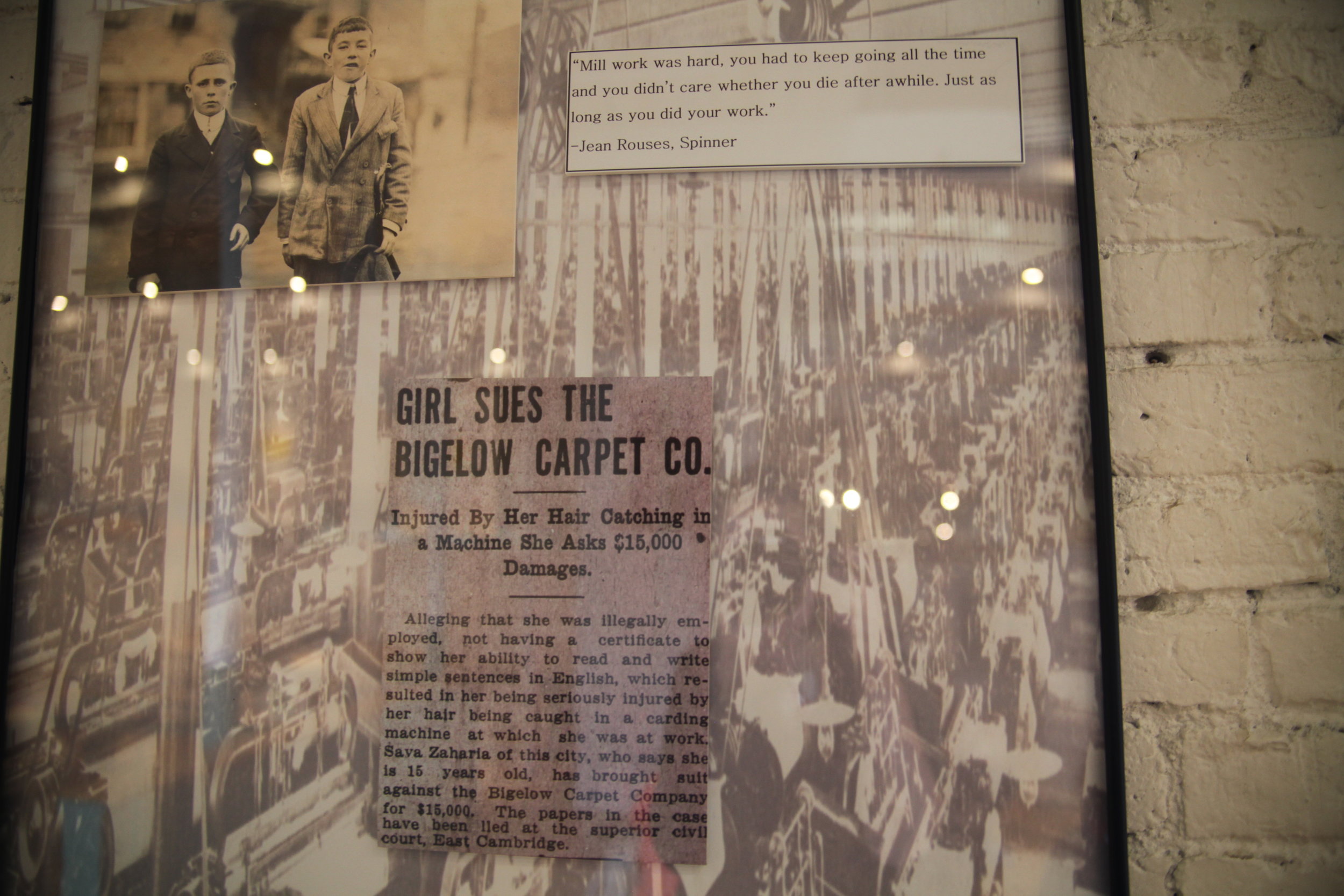Division I Humanities: Weaving together layers of New England labor history
By 6th grader Ezra K.
In late September, during their field trips to Sturbridge Village and the Lowell Mills, Division I Humanities students asked questions and learned about labor in the 1840’s. To start off our unit, we read a historical fiction book called Lyddie, by Katherine Paterson. The story follows a young woman on her journey from the Vermont farm where she grew up to the Lowell Mills where she finds both challenges and opportunities. After we finished the book, we each choose a character we’d like to “interview” about their lives. We were divided into pairs and developed a series of questions for our characters, all the while anticipating our visits to Sturbridge Village and Lowell.
Our visit to Sturbridge Village began with a hands-on workshop on printmaking. Where we learned how to write with a quill and ink, and had the opportunity to create marbled paper. In addition, we each printed a picture at the printing press. After this, we started to explore Sturbridge Village. The students split into two groups depending on what kinds of information they hoped to find. My group was creating an interview with Diana Goss, a fictional worker activist in the mills. In our conversations with people at Sturbridge Village, we learned about why girls would leave the farms to work in the mills and their limited rights during this time period. It was instructive to roam from building to building, meeting the actors representing different people from the time period. Some of the more memorable buildings were the tavern, the law office, the print shop, the tin shop, the Quaker Meeting House, and the farm. I really enjoyed visiting Sturbridge Village and learning so much about the 1800’s in a fun and interactive way!
The following week, we visited the Lowell Mills to continue learning about labor in this time period. First, our guide brought us to an interactive mill room, where we experienced a range of jobs, along with worker responsibilities and mill conditions. We discussed the consequences of pay cuts and lack of representation, and finally the workers organized a strike. Next, we learned about child labor all around the world. It was shocking and disappointing to learn that child labor persists today. Next, we went to the weaving room where we heard and saw real powered looms in action. Then, we visited a boarding house where mill girls would have stayed at, and we answered a few more question there. Finally, we went downstairs in the boarding house and met two awesome park rangers who gave us time to ask any remaining questions. I had a fascinating time at Lowell, I learned many things about child labor, mill life, and strikes.
Overall, these two field trips where a productive start to our year and helped us learn how to report on people, ask good questions, and find out about daily life in the 1840’s. These intriguing field trips to Sturbridge Village and Lowell National Park have left their mark. History can be transmitted in many ways, and these field trips were exceptional experiences!




















